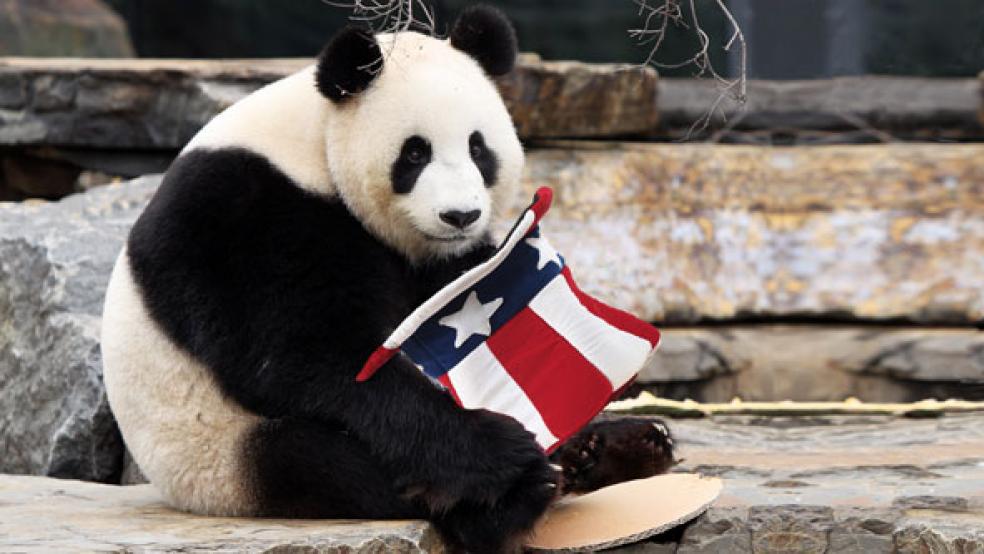If famed investor Jim Rogers is known for one trait above all, it is for spotting themes early--and betting on them big.
So when the co-founder of The Quantum Fund (with George Soros) and author of "Adventure Capitalist" became a father, he naturally thought of how best to give his daughters an advantage.
His answer: Have them learn Mandarin.
"I am spending a lot of time, money and energy to be sure my kids do it," Rogers told Reuters. Indeed. Instead of just hiring a Mandarin-speaking nanny or having his daughters take a language class or two per week, the Rogers family packed up their belongings and moved across the world to Singapore. "My older daughter has now won the nationwide Mandarin-speaking contest two years in a row," Rogers said. "Her little sister is even better."
Of course, not every parent is willing to undertake such a dramatic life change. But there is no denying that more and more Americans are keen to have their children learn the language of the world's most populous country and second-largest economy.
From schools with Mandarin enrichment, to immersion programs overseas, to lessons with private tutors, the Chinese-language options for everyone from toddlers to teens seem to be multiplying by the day.
Related: U.S. and China in a Lethal Game of Cyber Chess
"Based on a survey of type-A parents in D.C., New York and Los Angeles, the interest level is 100 percent," jokes Marc Ross, spokesman for the US-China Business Council, a Washington, D.C.-based trade group.
But as with anything in high demand, acquiring such skills does not necessarily come cheap, although there are some free options. Here is what it will cost to pick up the Mandarin tongue.
Mandarin enrichment and immersion
For a stunning array of options, check out the institutions in the Confucius Classrooms Network, the New York-based Asia Society's roundup of "exemplary" Chinese language and culture programs. Together, they add up to more than 25,000 students at more than 100 elementary, middle and high schools across the nation.
Some programs go well beyond the occasional instructional class, all the way to language immersion -- even for pre-kindergartners with their sippy cups and stuffed animals. Search for local options by simply plugging in your ZIP code at another site (chineseimmersionschools.com), and you get results plotted on an interactive map.
One free example: Washington Yu Ying public charter school in Washington, D.C. (washingtonyuying.org) - visited by First Lady Michelle Obama before her March trip toChina - offers Chinese immersion for students who win a spot through its application lottery.
Related: High Court Affirms Ban on Raced-Based College Admissions
A growing number of private institutions are rolling out Mandarin options, too.
On the high end: Brooklyn's Science, Language & Arts, an immersion school for pre-kindergarten through the third grade that teaches both French and Mandarin. This year's tuition ranged from $14,800-$16,300, with a minimum of two Mandarin classes a week and more time set aside for advanced speakers.
Overseas immersion programs
As any language learner knows, an efficient way to learn is to have no choice but to speak the local language.
The Mandarin Immersion Parents Council -- founded in 2007 in San Francisco -- offers a handy compendium of camps and summer programs for kids. Many take place in Beijing, such as those offered by China Study Abroad, Live the Language, and Ivy Schools. Costs start around $3,000 and can go up to nearly $40,000.
One new summer-camp option is the International Leadership Camp in Taihu, China, organized by Pennsylvania-based Camp Kweebec. The organization will take up to 50 kids, between ages 10 and 13, for a 25-day camp this July that will mix Mandarin classroom instruction with cultural activities like martial arts, cooking and calligraphy. The price tag: $9,975.
"Some parents might think it is nuts to send their kid to China," says Matt Rosenfeld, Camp Kweebec's associate director. "But others say it is exactly the kind of experience they have been looking for. The goal is for kids to come home speaking comfortably, learning between 300-400 characters."
Related: 'Common Core' Sparks a Schoolyard Brawl Over Education Standards
Private tutors
If having your kid travel to Guangzhou or Shenzhen isn't really your bag, you can stick close to home and go the private-tutor route. Rates tend to vary widely, depending on location and experience. Local options can be sifted at sites like WyzAnt, which boasts a database of more than 72,000 tutors in multiple subjects.
Of course, with tech advances like Skype, you don't even really need to have a tutor in your living room. The site DiscoverMandarin.com, for instance, founded by Ridgewood, New Jersey's Corinne Dillon - a fluent Mandarin speaker herself - links you live on a one-on-one basis with teachers in Beijing.
Such an approach is geared more toward middle-schoolers and high-schoolers, given the nature of the format. A package of 50 classes, lasting 50 minutes each, runs $25 per lesson -- or $1,250. Signing up for fewer classes boosts that rate up to $30 or $35 per lesson.




